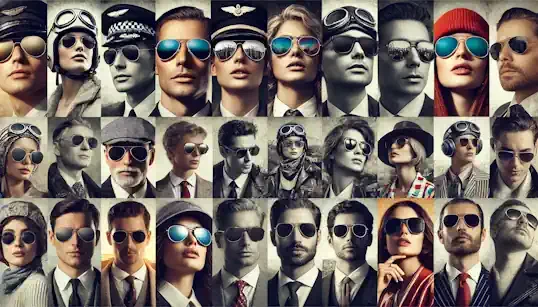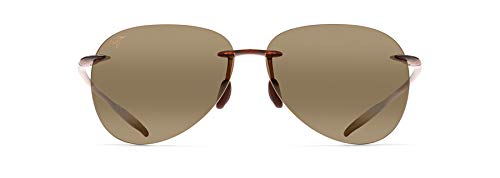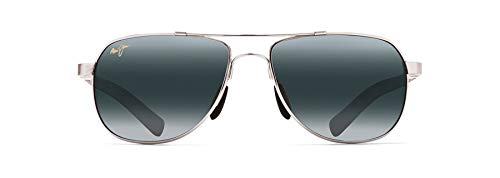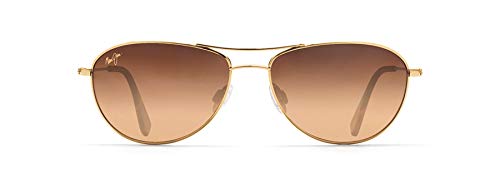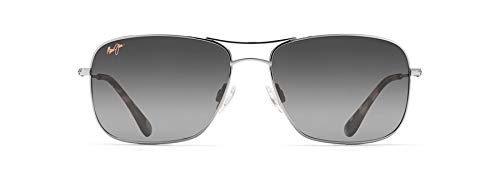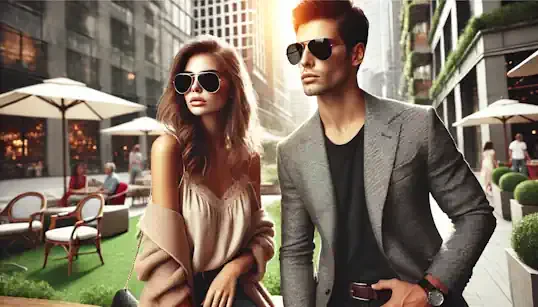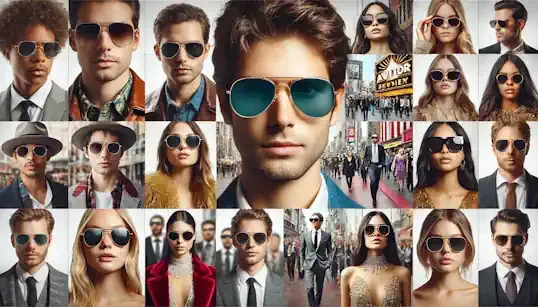Aviator sunglasses, the words alone evoke images of effortless cool, classic style, and a sense of enduring appeal. They are often touted as timeless – a wardrobe staple that transcends trends and seasons, effortlessly bridging eras and remaining perpetually chic. From sun-drenched beaches to bustling city streets, from vintage photographs to contemporary fashion blogs, aviator sunglasses seem to have a permanent place in the style lexicon. They promise an instant upgrade to any outfit, a touch of rebellious nonchalance, a hint of classic Hollywood glamour. But in an ever-evolving fashion landscape, where trends cycle at an increasingly rapid pace and what’s considered “in” can shift in a matter of months, does the “timeless” label still hold true for aviator sunglasses? Is their enduring popularity truly a testament to their inherent style, or is it simply nostalgia, a clinging to a look that might, dare we say it, be in danger of becoming dated? And more importantly, for those of us considering adding or re-embracing aviators in our modern wardrobes, how do you ensure your pair looks current, not caught in a time warp, how do you make them feel fresh and relevant, not a relic of a bygone era? This article will critically examine the notion of aviator sunglasses as “timeless,” exploring the historical and cultural factors that contribute to this perception, while also acknowledging the potential pitfalls of simply assuming their everlasting style. We'll delve into the arguments for their enduring appeal and confront the realities of how they can sometimes appear dated if not styled thoughtfully. Ultimately, we aim to move beyond simple declarations of "timelessness" and provide concrete, contemporary styling advice to ensure aviator sunglasses remain a vibrant and fashionable accessory, not a dusty museum piece, in the modern wardrobe.
To understand the claim of “timelessness” often attached to aviator sunglasses, we must first acknowledge the powerful roots from which they sprung and the iconic status they quickly achieved. Their origin story is not one of whimsical design meetings in a Parisian atelier, but rather, a story born from pure, unadulterated function. As we explored previously, aviator sunglasses emerged from the demanding environment of the cockpit, crafted to solve a very real and pressing problem for early pilots: the blinding glare of the sky. This genesis in military necessity, in the rigorous world of aviation where performance and reliability were paramount, imbues them with an inherent sense of authenticity and purpose. They weren't designed to be fashionable; they were designed to be effective, to enable pilots to see clearly and safely in challenging conditions. This very functionality, this grounding in a practical need, paradoxically became a cornerstone of their enduring appeal. They carry with them the legacy of those early aviators, figures of skill, daring, and a certain romantic heroism in the public imagination. These weren't just sunglasses; they were sunglasses worn by the men who commanded the skies, who pushed the boundaries of human flight. This historical association, deeply embedded in their design, is a powerful ingredient in their perceived “timelessness.” It's not just about a shape; it's about a story, a heritage, a connection to a specific moment in history that continues to resonate.
Beyond their historical pedigree, the very design of aviator sunglasses contributes significantly to their perceived versatility and lasting appeal. The core aesthetic – the slender metal frame and the distinctive teardrop or aviator-shaped lens – possesses an almost elemental simplicity. It’s a design that is neither overly fussy nor aggressively trend-driven. The shape is often described as universally flattering, or at least, perceived as such by many. It’s said to balance different face shapes, adding structure to rounder faces and softening more angular features. Whether this is objectively true for everyone is debatable, but the perception of this flattering quality is undeniable and has undoubtedly fueled their broad appeal. Furthermore, the fundamental design has proven remarkably adaptable over time. While the core silhouette remains recognizable, aviator sunglasses have been rendered in countless materials – from classic gold and silver metals to more contemporary titanium and stainless steel, from lightweight acetate to even more avant-garde materials. Lens colors have expanded far beyond the original green and grey, encompassing mirrored finishes, gradient tints, and a spectrum of hues to suit diverse tastes and current trends. Frame shapes have subtly evolved too, with variations in the curvature of the lenses, the thickness of the frames, and the detailing at the temples and bridge. Yet, through all these iterations, the essential “aviator” DNA remains intact, a testament to the strength and adaptability of the original design concept. This ability to subtly evolve while retaining its core identity is a key factor in their perceived timelessness; they feel both familiar and perpetually fresh.
Perhaps the most compelling argument for the “timelessness” of aviator sunglasses lies in their undeniable cultural longevity and continued popularity. Look through archives of popular culture across the decades, and you will find aviator sunglasses consistently present, adorning the faces of style icons from every era. From the early silver screen heroes of the mid-20th century to the rock stars of the 70s and 80s, from the supermodels of the 90s to the contemporary celebrities of today, aviators have remained a steadfast accessory choice. Think of iconic figures – Steve McQueen in his effortlessly cool aviators, Robert De Niro’s brooding intensity enhanced by their dark lenses, Tom Cruise’s “Maverick” persona indelibly linked to the style, and countless musicians and artists who have adopted them as part of their signature look. This consistent presence across generations of style leaders reinforces the notion of their enduring appeal. They are not a fleeting trend that burned brightly and faded; they are a constant presence in the cultural landscape of style. Moreover, their continued presence on the runways and in the pages of high fashion magazines further solidifies their claim to timelessness. Designers consistently incorporate aviator sunglasses into their collections, reinterpreting them for each season, showcasing their adaptability and continued relevance within the ever-shifting world of high fashion. This sustained presence, this unwavering embrace by both popular culture and high fashion, provides powerful evidence for the argument that aviator sunglasses are indeed more than just a trend – they are a style archetype, a design that resonates on a deeper level with our collective sense of what is cool, classic, and perpetually stylish.
However, to simply declare aviator sunglasses “timeless” without qualification would be to paint an incomplete picture. While their history, design, and cultural longevity certainly make a strong case for their enduring appeal, the reality is that even the most classic pieces can, if worn without consideration, begin to look dated, or at the very least, less than contemporary. The very notion of “timelessness” can be a trap if it lulls us into a sense of complacency, a belief that we can simply dust off any pair of aviators from any era and automatically look effortlessly stylish. Style is not static; it’s a dynamic, ever-evolving conversation, and even classic pieces need to be actively engaged with to remain relevant in the present moment. One of the key pitfalls is the danger of stagnation. “Timeless” does not equate to “wear them exactly the same way forever.” Fashion trends, even subtle shifts in silhouette, color palettes, and overall aesthetic preferences, inevitably influence how we perceive even the most classic items. Wearing aviators in a way that feels rigidly stuck in a particular era – for example, replicating a very literal “Top Gun” 80s look, complete with overly shiny gold frames and a matching bomber jacket, or clinging to a very austere, almost military-precise interpretation – can, ironically, make them look dated, even cartoonish, rather than timelessly chic. It's not that the design itself is inherently flawed, but rather that the styling can become locked in a past moment, losing its contemporary edge.
Furthermore, trend cycles, with their cyclical nature, also play a role in how we perceive aviator sunglasses at any given time. Even items considered “classic” experience ebbs and flows in their trendiness. There might be periods where aviators are perceived as less “fashion-forward” than other eyewear shapes, moments when bolder, more angular, or more minimalist frame styles dominate the fashion conversation. While aviators may never truly disappear from the style landscape, their prominence and perceived “cool factor” can fluctuate in relation to prevailing trends. Current trends in eyewear – the rise of chunky acetate frames, the resurgence of retro-inspired shapes from different decades, the minimalist movement favoring rimless or barely-there frames – can, at times, make a very traditional, classic aviator look feel slightly less cutting-edge, less directly aligned with the immediate zeitgeist. This doesn't diminish their underlying style, but it does highlight that even timeless pieces exist within a larger fashion ecosystem and are subject to the subtle shifts in perception that come with evolving trends. The fashion landscape is always in motion, and what we perceive as “cool” or “stylish” is constantly being subtly redefined.
Perhaps the biggest danger in relying solely on the “timeless” label when it comes to aviator sunglasses is the potential for “generic” or uninspired styling. Simply grabbing any pair of aviators and throwing them on without considering the rest of your outfit, your personal style, or the overall context can result in a look that, while not necessarily “dated,” simply feels bland, uninspired, or even a little lazy. “Timeless” should not be mistaken for “effortless autopilot.” Even the most classic pieces require conscious styling to truly shine in the present moment. Treating aviators as a style afterthought, as a generic accessory that requires no further thought, is to miss the opportunity to harness their full potential and to risk them simply fading into the background, rather than elevating your look. True timelessness in style is not about blindly adhering to a formula from the past, but about understanding the enduring qualities of a classic piece and then actively reinterpreting and restyling it for the present, infusing it with your own personality and contemporary sensibility. It’s about conscious curation, not passive acceptance.
So, how do we ensure our aviator sunglasses remain a stylish asset in the modern wardrobe, avoiding the pitfalls of datedness and generic styling, and actively harnessing their timeless potential for the here and now? The key lies in embracing contemporary styling strategies, in understanding how to update and personalize this classic design for a fresh, relevant look. One of the most effective ways to instantly modernize aviator sunglasses is to pay close attention to frame materials and finishes. While classic gold and silver metal frames remain perennially stylish, exploring aviators in contemporary materials can inject an instant dose of modernity. Consider matte metals like gunmetal or brushed silver, which offer a more understated and sophisticated feel compared to high-shine finishes. Bolder acetate frames, particularly in tortoiseshell or solid black, can provide a more substantial and contemporary presence, moving away from the typically delicate metal frames. Experiment with interesting textures and frame details – subtle etching, contrasting materials, or architectural bridge designs – to add a touch of individuality and contemporary flair. Moving beyond very basic, thin, shiny gold frames (unless that specific retro-chic vibe is your intentional style choice) is often the first step in making aviators feel instantly more current.
Lens considerations also play a crucial role in updating the aviator look. While classic green or gold-toned lenses are undeniably iconic, venturing beyond these traditional hues can significantly modernize the style. Mirrored lenses, particularly in cool silvers, blues, or subtle gradients, can add a futuristic edge (use them in moderation to avoid veering into overly trendy territory). Gradient lenses, which transition from a darker tint at the top to a lighter shade at the bottom, offer a sophisticated and practical update, providing sun protection while also allowing for better visibility at the lower part of the lens. Experiment with interesting tints beyond the standard green or gold – soft greys, muted blues, or even subtle, fashion-forward colors can inject personality and contemporary style. Beyond just color, consider lens technology. Polarized lenses, while primarily functional, are now often incorporated into stylish designs, offering superior glare reduction and visual clarity, blending practicality with modern eyewear technology. Anti-reflective coatings, while invisible, also contribute to a more polished and contemporary look by minimizing distracting reflections on the lens surface.
Beyond frame and lens choices, paying attention to proportions and how aviators interact with your face shape is crucial for a modern and flattering look. While the classic aviator shape is often touted as universally flattering, the size and specific contours of the frame can significantly impact how they look on different individuals. While “rules” about face shapes and eyewear are ultimately flexible guidelines, considering the balance of proportions can be helpful. In some eras, dramatically oversized aviators were highly fashionable; however, for a more contemporary feel, slightly more refined proportions may be preferable. Consider aviators that are not excessively large, ensuring they don't overwhelm your features or dominate your face. Experiment with lens depth versus frame width – a slightly shallower lens or a slightly wider frame can subtly alter the overall silhouette and create a more modern balance. Ultimately, the goal is to find a pair of aviators that feels proportionally harmonious with your features, enhancing rather than overpowering your natural look.
Perhaps the most transformative aspect of making aviator sunglasses work in the modern wardrobe is through thoughtful and contemporary outfit pairings. Moving beyond purely pilot or military-inspired looks is key to avoiding a dated or overly literal interpretation. Instead, consider how aviators can be integrated into a diverse range of contemporary styles. Pair them with modern casual wear – think elevated basics like crisp white shirts, tailored trousers, and minimalist sneakers, or incorporate streetwear elements like hoodies, joggers, and bomber jackets for a more urban edge. Athleisure looks, with their emphasis on comfort and sporty style, can also be surprisingly chic when accessorized with aviators, adding a touch of cool nonchalance to activewear. For more dressed-up occasions, aviators can be surprisingly effective with tailored but contemporary outfits. Think modern suits in updated silhouettes, sharp separates like blazers and wide-leg trousers, or minimalist chic ensembles in neutral tones. The slight contrast between the inherently casual and slightly rebellious vibe of aviators and the polished formality of tailored clothing can create a sophisticated and unexpected tension. Don’t be afraid to experiment with unexpected pairings. Try juxtaposing the inherent masculinity of aviators with very feminine dresses – a flowing maxi dress, a delicate lace number, or a floral print. This unexpected contrast can be incredibly stylish and modern, playing with the interplay of ruggedness and softness, creating a look that is both balanced and intriguing. The key is intentionality. Think about how the aviators complement the overall mood and style of your outfit, rather than simply throwing them on as an afterthought.
Finally, embrace subtle updates and personalization. Look for aviator styles that incorporate subtle contemporary details – an interesting bridge design, unique temple embellishments, a slightly modified lens shape that subtly deviates from the classic teardrop. These small, considered details can make a significant difference in bringing the design into the present moment. Ultimately, the most important aspect of making aviator sunglasses work “now” is to find pairs that resonate with your own personal style and reflect the current trends you appreciate. Don't feel beholden to rigidly adhering to a historical template or a purely traditional interpretation. Experiment, explore different styles, and find aviators that feel authentically you in the context of contemporary fashion. True timelessness is not about replicating the past, but about confidently reinterpreting and reinventing classic elements for the present and the future.
So, are aviator sunglasses really timeless? The nuanced answer is a resounding yes… and no. Yes, in their core design, in their historical weight, and in their undeniable versatility, they possess a timeless quality that few other eyewear styles can rival. But no, their “timelessness” in a modern context is not automatic or guaranteed. To truly make aviators work now, to harness their enduring appeal without falling into dated styling traps, requires conscious effort, thoughtful styling, and a willingness to embrace contemporary updates. They are not a style relic to be passively admired from afar, but a classic design that is continually ripe for reinvention and reinterpretation. Aviator sunglasses are not just a faded photograph from the past; they are a living, breathing style icon that can be vibrantly, confidently, and stylishly worn in the present and for many years to come. Their “timelessness” is not a fixed state, but an ongoing process of adaptation, personalization, and stylish re-imagination. Embrace the challenge, experiment with modern styling, and discover the enduring power of aviator sunglasses to elevate your contemporary wardrobe, ensuring they remain not just a classic, but a truly current style statement.
